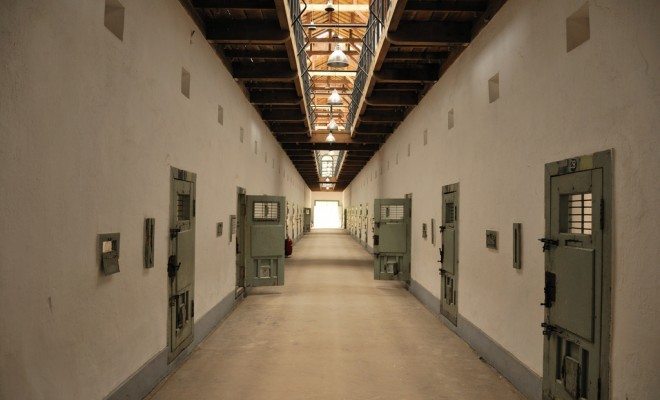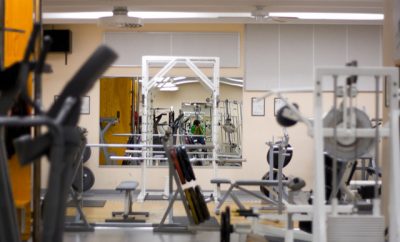
News
Georgia’s State Prisons: Breeding Grounds for Violence
Prison officials are struggling to stop the violence that plagues Georgia’s state prisons, and the deplorable conditions that Georgian prisoners are experiencing have begun to creep beyond the cell walls. The numbers alone are shocking. Since 2010, 33 prisoners and one officer have been killed by prisoners in Georgia, according to a report released by the Southern Center for Human Rights (SCHR). The number of homicides committed by prisoners in Georgia’s state prisons has tripled since 2004. Georgia has seen more homicides in its state prisons in one year than other states such as Pennsylvania, Virginia, and Kentucky have each had in the last 10 years. Who’s to say that kind of behavior will cease when these perpetrators are released?
Victims of these often-fatal attacks are considered lucky if they survive. CNN recently reported that Georgia’s prisoners regularly face being stabbed, burned, raped, and dismembered. When a prisoner under attack shouts for help, the victim’s pleas usually fall on deaf ears. For the most part, sympathy is lacking for those prisoners subject to violence while serving time, so advocacy for change is hard to muster. But what the public needs to understand is the lasting effects this violence has on society once the prisoners are released. The report highlights this point:
Prisons are supposed to provide rehabilitation. But violent prisons teach and breed violence. Further, since about one third of people in the GDC [Georgia Department of Corrections] are incarcerated for nonviolent crimes, the dangerous conditions in Georgia prisons threaten those who have committed violent crimes and those with no history of violence alike.
The report lists the legal standards against violence in prisons and tries to pinpoint the root causes:
- Supervision of prisoners is dangerously inadequate.
- Prisoners have access to lethal weapons that are either smuggled in, or fabricated using items found at the prison.
- Some cell door locks have been left broken for years.
- Gangs have filled a security vacuum and control many prison resources.
- Prisoners have access to a steady supply of cell phones and smart phones.
- Protective custody procedures are inadequate, and prison officials ignore threats to prisoners’ safety.
According to the SCHR report, prison officials are in violation of laws protecting prisoners if they knowingly disregard violence and make no attempts at halting imminent danger. Furthermore, some prison officials are directly involved in the smuggling of contraband inside prison walls. My colleague Alexandra Stembaugh wrote about similar problems in the war on drugs behind bars. It’s clear that we need tougher consequences for culprits to curb this kind of corruption.
Some of the most violent prisons in Georgia include Baldwin State Prison, Smith State Prison, and Hays State Prison. At Baldwin, countless attacks were carried out uninterrupted. One man was beaten, tied up, had scalding water poured on his groin, and a broom handle shoved up his rectum. No officer came to his rescue until he stumbled to the exit with both eyes swollen shut and his face covered in blood. This incident was neither a freak accident nor a rare occurrence. According to the SCHR report:
In case after case, attacks on men at Baldwin start and finish without anyone on the prison staff knowing they are happening. GDC reports have repeatedly documented incidents in which officers find out about an assault only after prisoner-witnesses report it, after the victim manages to escape, or when officers find a man injured on the ground.
Still lacking sympathy? Take into account the 33 percent of prisoners who were incarcerated for nonviolent crimes. Then take a look at your tax dollars, which are supposedly used for “maintaining” those prisons. The GDC Annual Report for 2013 showed the total funds spent in the fiscal year exceeded $1 billion, 97 percent of which came from state funding. Such a large amount of money is spent on this small percentage of the population, so why are violence and rape so prominent in Georgia’s jails?
Maybe it’s the serious lack of supervision in these prisons, which allowed locks to remain broken for several years. Maybe it’s the amount of influence gangs have–in some prisons the gang affiliates are able to choose the living assignments. Maybe prison officials fear their lives because so many prisoners have access to lethal weapons, drugs, and outside connections. But something must be done to stop this epidemic. The Pew Research Center reported that in Georgia prisons “the average offender released in 2009 served 3.2 years in custody, 75 percent more than the average offender released in 1990.” That means criminals serving longer sentences in deplorable conditions have more time to adopt violent tendencies.
Despite all the GDC’s efforts to rehabilitate their inmates, the constant violence plaguing Georgia prisons trumps their progress. I’m on board with the SCHR–the Supreme Court needs to investigate the GDC and get an inside look at Georgia prisons. Put an end to the senseless, brutal violence. Stop the torture. Do something to put those tax dollars to use. I’m not defending criminals–they landed themselves on a metal cot in an 8 by 10 cell. But I also don’t think they deserve having every last human right stripped from them. And the last thing Georgia’s citizens need is to fear their releases. Better regulations in prisons paired with successful rehabilitation programs could help break this horrible cycle.
—
Natasha Paulmeno (@natashapaulmeno)
Featured image courtesy of [Christian Senger via Flickr]








Comments